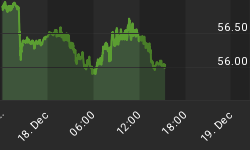No matter how you cut it, the stock market needs "an increasing inflow of money to go up and increasing money flow to sustain an up move".
One of the daily charts we post on our paid subscriber site shows the in-flow and out-flow of Liquidity in the stock market.
When Liquidity flows reach a level known as "Liquidity Expansion", then the market is Bullish and can sustain a Bull market move. However, when Liquidity is in Contraction, the removal of the money from the market always results in a down movement.
Up until April 26th, the market was fine and Liquidity was increasing steadily. And then, on May 4th, it dropped radically ... followed by another huge drop that took it into "Liquidity Contraction" on May 5th. (When the market experiences a Liquidity outflow, it is never a smart time to be on the long side.)
So, what is happening with Liquidity levels now?
A quick look at the chart shows that Liquidity hit a low on June 30th, and then started rising. If has risen since then and is in an up-trend because it has made higher/highs and higher/lows. That's the good news. The not so good news, is that it hasn't made it out of Contraction Territory ... yet.
But, it is almost there ... in fact, Liquidity reached the neutral line on July 26th. and 27th, but then pulled back. Since it is in an up-trend, the odds are favoring that it will move into Expansion Territory and today may well be the market's test day to see if investors have enough optimism.
















